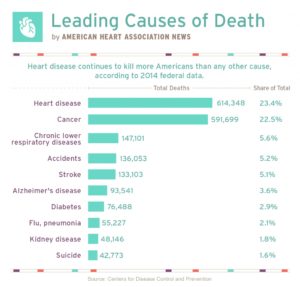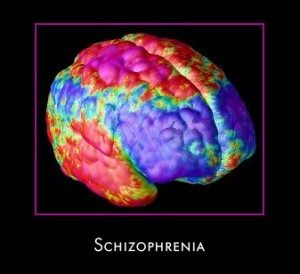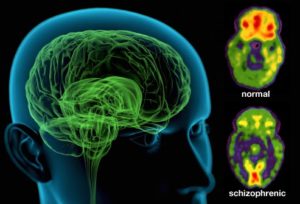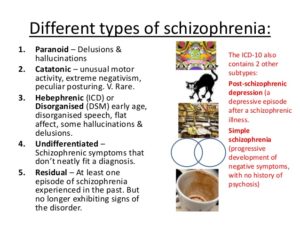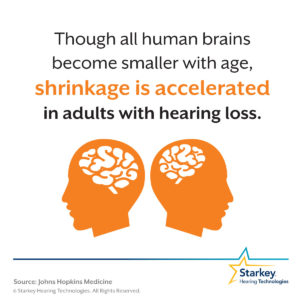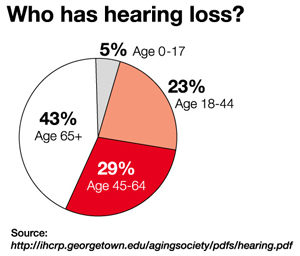“In 2020, life expectancy at birth was 77.0 years for the total U.S. population—a decrease of 1.8 years from 78.8 years in 2019 (Figure 1). For males, life expectancy decreased 2.1 years from 76.3 in 2019 to 74.2 in 2020. For females, life expectancy decreased 1.5 years from 81.4 in 2019 to 79.9 in 2020.
Archive | March 2022
QUOTE FOR WEDNESDAY:
“The majority of deaths are caused by chronic conditions such as heart disease, cancer, stroke, diabetes, and
Alzheimer’s disease. During the 20 th century these chronic diseases replaced acute infections as the major causes of
death.”
Centers for Disease Control and Prevention (CDC)
QUOTE FOR TUESDAY:
“Suicide fell off the list of the 10 leading causes of death in the U.S. in 2020, amid a rise in deaths from chronic liver disease and cirrhosis and the emergence of COVID-19, the latter of which did make the list. Meanwhile, diabetes deaths topped 100,000 for the first time, while deaths from accidents – a category that includes unintentional drug overdoses – topped 200,000 for another record mark.
CDC researchers noted that death rates increased for six of the 10 leading causes of death in the U.S. in 2020, and decreased for only two: cancer and chronic lower respiratory diseases. The death rate for kidney disease stayed the same.”
US News (https://www.usnews.com)
QUOTE FOR MONDAY:
“Heart disease is the leading cause of deathTrusted Source for both men and women. This is the case in the U.S. and worldwide. More than half of all people who die due to heart disease are men. Medical professionals use the term heart disease to describe several conditions. Many of these conditions relate to the buildup of plaque in the walls of the arteries. As the plaque develops, the arteries narrow. This makes it difficult for blood to flow around the body and increases the risk of heart attack or stroke. It can also give rise to angina, arrythmias, and heart failure. To reduce the risk of dying from heart disease, a person can protect their heart health by adopting a healthful diet and getting regular exercise.”
MedicalNewsToday (https://www.medicalnewstoday.com)
Part I Top Leading Diseases in America!
Over the years news has been filled with stories about Ebola, breast cancer and Methicillin Resistant Staph Aureus (MRSA) which all gets a lot of press today. Would it surprise you to know that neither makes the list of the 10 deadliest diseases in the USA? Even more surprising, perhaps, is that several of the deadliest diseases, including the number one killer in the world, are at least partially preventable. It is right under are nose people but it doesn’t seem to be a topic of discussion in SCHOOL, you when young, taught at that grade level for the child to comprehend. It is not even a standard topic in college to pass on health education which obviously our country needs based on the statistics of disease and Obesity alone which causes a lot of the diseases after being obese for a long period of time which could have been prevented but for millions of people it is not the priority over food. Why? It takes an individual to want to make change in their life either drastically or gradually depending on how much to you need to or desire to lose weight. The people that surround you frequently and that are important to you helps if they are supporting that cause since it helps first you and all the people around you; like your children and even significant other to other family members (mom, close cousin, etc…) and even friends. If we all made this a cause our health care system would end up being a lot more affordable for all but we the society make it difficult with too many staying unhealthy. Wake up Americans take care of yourself to help yourself and all around you. Where a person lives, having the access to preventive care, and the quality of healthcare provided in a community are all factors that can either benefit or put people in that community into the risk of obesity.
Surprising news is that we, due to not regarding our health as a priority in many areas of the USA show the following statistics:
Of all the causes of death in the US, the leading top 10 causes account for nearly 75% of all deaths and the top 3 causes account for over 50% of all deaths in the country, with the main culprits remaining relatively consistent for at least the last five years.
The top leading 10 causes of death are:
- Heart disease (which can be prevented)
- Cancer (malignant neoplasms). Some cancers without question can be prevented (lung CA due to smoking)
- Chronic lower respiratory disease (same as above if we are referring to emphysema and its due to smoking)
- Stroke (cerebrovascular diseases) (this also in many cases can be prevented) Check out Monday’s article.
- Accidents (unintentional injuries)
- Alzheimer’s disease
- Diabetes (diabetes mellitus) If its diabetes II; usually due to obesity and diet.
- Influenza and pneumonia
- Kidney disease (nephritis, nephrotic syndrome, and nephrosis)
- Suicide (intentional self-harm).
1.)Heart Disease shows:
The #1 leading disease in the US!
- Deaths: 596,577
- Males: 308,398
- Females: 288,179
- Rate: 191.5
- Age-adjusted rate: 173.7
- Percentage of total deaths: 23.71%.
Heart disease is the leading cause of death for both men and women in the US and also the leading cause of death worldwide. More than half of the deaths that occur as a result of heart disease are in men.
Coronary heart disease costs the US $108.9 billion each year and is the most common type of heart disease.3
Heart disease is a term used to describe several problems related to plaque buildup in the walls of the arteries. Ending line clogging up the vessels closing up the pipelines our blood is carried through (vessels) to give oxygen to our blood tissues with taking carbon dioxide to the lungs for more 02 when its used up by our cells who carry oxygen to our tissues (02 is the fuel for our body to stay alive).
As the plaque builds up, the arteries narrow, making it more difficult for blood to flow and creating a risk for heart attack or stroke due to ischemia (Lack of oxygen to the tissues. If its lack of 02 to the heart angina to an MI if its the brain a TIA-transient ischemic attack or worse a CVA-stroke). Remember, prevention=protection is the first step so you don’t get this problem at all. Ending line the better you take care of yourself the higher the odds you will not get this problem.
How can you take this step in PREVENTION;
Protecting the heart
Lowering blood pressure and cholesterol can significantly lower heart disease risk.
- Follow instructions on medication usage if your already on it
- Make sure diet is low in salt, fat, saturated fat and cholesterol and high in fresh fruits and vegetables
- It is recommended that exercise in the form of a brisk 10 minute walk takes place 3 times a day, 5 days a week
- Avoid excessive alcohol use
- Quit smoking
- All steps listed above if you follow has even caused patients to stop medications completely because the changes listed above caused the problem in high statistics with the individual having no heredity.
QUOTE FOR THE WEEKEND:
“Schizophrenia is a serious mental disorder in which people interpret reality abnormally. Schizophrenia may result in some combination of hallucinations, delusions, and extremely disordered thinking and behavior that impairs daily functioning, and can be disabling.
People with schizophrenia require lifelong treatment. Early treatment may help get symptoms under control before serious complications develop and may help improve the long-term outlook.”.
MAYO CLINIC
What is Schizophrenia?
Schizophrenia is a serious disorder which effects how a person thinks, feels and acts. A individual with this diagnosis may have difficulty distinguishing between what is real and what is imaginary; may be unresponsive or withdrawn; and may have difficulty expressing normal emotions in social situations. The person with schizophrenia may have difficulty expressing normal emotions in social situations.
Contrary to public perception, schizophrenia is not split personality or multiple ones. The vast majority of people with schizophrenia are not violent and do not pose a danger to others; if anyone they could put a danger to is themselves without supervision around. Schizophrenia is not caused by childhood experiences, poor parenting, lack of will power. The signs and symptoms of the disease are not the same for each person.
The cause of schizophrenia is still not clear. Some theories about the cause of this disease include: genetics (heredity), biology (the imbalance in the brain’s chemistry); and/or possible viral infections and immune disorders.
Another cause can be genetics (heredity). Scientists recognize that the disorder tends to run in families and a person inherits to develop the disease. Schizophrenia may also be triggered by environmental events like viral infections or highly stressful situations or a combination of both. Similar to some other genetically-related illnesses, schizophrenia appears when the body undergoes hormonal and physical changes, like those that occur during puberty in the teen and young adult years.
Substance use can be another cause. Some studies have suggested that taking mind-altering drugs during teen years and young adulthood can increase the risk of schizophrenia. A growing body of evidence indicates that smoking marijuana increases the risk of psychotic incidents and the risk of ongoing psychotic experiences. The younger and more frequent the use, the greater the risk. Another study has found that smoking marijuana led to earlier onset of schizophrenia and often preceded the manifestation of the illness.
Another etiology deals with chemistry. Genetics help to determine huw the brain uses certain chemicals. People with schitzophrenia have a chemical imbalance of brain chemicals (serotonin and dopamine) which are neurotransmitters. These neurotransmitters allow nerve cells in the brain that send messages to each nerve cell. The brain is made up of nerve cells, called neurons, and chemicals, called neurotransmitters. An imbalance of one neurotransmitter, dopamine, is thought to cause the symptoms of schizophrenia. … The “dopamine hypothesis” has been the main theory regarding the cause of the symptoms of schizophrenia. Dopamine is produced in the dopaminergic neurons in the ventral tegmental area (VTA) of the midbrain, the substantia nigra pars compacta, and the arcuate nucleus of the hypothalamus. With the imbalance these chemicals affects the way a person’s brain reacts to stimuli—which explains why a person with schizophrenia may be overwhelmed by sensory information (Ex. loud music or bright lights) which other people can easily handle. This problem in processing different sounds, sights, smells and tastes can also lead to hallucinations or delusions.
Looking for a moment at Dopamine in different areas of the brain in both low and high amounts see how it effects brain thinking to better understand schizophrenia.
Dopamine in cognition:
Dopamine in the frontal lobes of the brain controls the flow of information from other areas of the brain. Disorders of dopamine in this region lead to decline in neurocognitive functions, especially memory, attention, and problem-solving.
D1 receptors and D4 receptors are responsible for the cognitive-enhancing effects of dopamine. Some of the antipsychotic medications used in conditions like schizophrenia act as dopamine antagonists. Older, so-called “typical” antipsychotics most commonly act on D2 receptors, while the atypical drugs also act on D1, D3 and D4 receptors.
Dopamine in movement
A part of the brain called the basal ganglia regulates movement. Basal ganglia in turn depend on a certain amount of dopamine to function at peak efficiency. The action of dopamine occurs via dopamine receptors, D1-5.
Dopamine reduces the influence of the indirect pathway, and increases the actions of the direct pathway within the basal ganglia. When there is a deficiency in dopamine in the brain, movements may become delayed and uncoordinated. On the flip side, if there is an excess of dopamine, the brain causes the body to make unnecessary movements, such as repetitive tics.
Dopamine in pleasure reward seeking behavior
Dopamine is the chemical that mediates pleasure in the brain. It is released during pleasurable situations and stimulates one to seek out the pleasurable activity or occupation. This means food, sex, and several drugs of abuse are also stimulants of dopamine release in the brain, particularly in areas such as the nucleus accumbens and prefrontal cortex.
Dopamine and addiction
Cocaine and amphetamines inhibit the re-uptake of dopamine. Cocaine is a dopamine transporter blocker that competitively inhibits dopamine uptake to increase the presence of dopamine.
Amphetamine increases the concentration of dopamine in the synaptic gap, but by a different mechanism. Amphetamines are similar in structure to dopamine, and so can enter the presynaptic neuron via its dopamine transporters. By entering, amphetamines force dopamine molecules out of their storage vesicles. By increasing presence of dopamine both these lead to increased pleasurable feelings and addiction.
Dopamine in memory
Levels of dopamine in the brain, especially the prefrontal cortex, help in improved working memory. However, this is a delicate balance and as levels increase or decrease to abnormal levels, memory suffers.
Dopamine in attention
Dopamine helps in focus and attention. Vision helps a dopamine response in the brain and this in turn helps one to focus and direct their attention. Dopamine may be responsible for determining what stays in the short term memory based on an imagined response to certain information. Reduced dopamine concentrations in the prefrontal cortex are thought to contribute to attention deficit disorder.
Dopamine is affected in schizophrenia, just look at the functions of the chemical and the signs and symptoms of schizophrenia.
Signs and symptoms of schizophrenia:
–Deficits in cognitive abilities are widely recognized as a core feature of this disease. The deficits impacting the cognitive function are found in a large number of areas: working memory, long-term memory,verbaldeclarative memory, semantic processing, episodic memory, attention, learning (particularly verbal learning). Deficits in verbal memory are the most pronounced in individuals with schizophrenia, and are not accounted for by deficit in attention. Verbal memory impairment has been linked to a decreased ability in individuals with schizophrenia to semantically encode (process information relating to meaning), which is cited as a cause for another known deficit in long-term memory. When given a list of words, healthy individuals remember positive words more frequently (known as the Pollyanna principle); however, individuals with schizophrenia tend to remember all words equally regardless of their connotations, suggesting that the experience of anhedonia impairs the semantic encoding of the words. These deficits have been found in individuals before the onset of the illness to some some extent and varying degrees.
-Delusions
-Hallucinations
-Disorganized speech
-Disorganized or catatonic behavior
TREATMENT FOR SCHIZOPHRENIA:
There is no cure for schizophrenia, but it can be treated and managed in several ways.
-Antipsychotic medications
-Psychotherapy, such as cognitive behavioral therapy and assertive community treatment and supportive therapy.
– Self-management strategies and education
QUOTE FOR FRIDAY:
“By nature, human beings are first and foremost emotional creatures. Our everyday habits, routines, rituals, attitudes, and perceptions are all influenced by our emotions. So much so that we don’t realise that we are programmed by them. The concept of free will can come into question with our preferences built-in to our being.Our preferences are instrumental in creating who we are and what we want. Are we really making choices or are we just expressing what is already inside us? This is a great question to ponder.
When we become overwhelmed with an emotion, it seems to take over our perception and awareness of life at that moment. When we become overtaken by the emotion, our present moment experience is seen through the lens of the emotion. If we are overwhelmed with happiness, sadness, fear, disgust, or any other emotion, we are hard pressed to think or feel anything else.”
Psychreg.org (https://www.psychreg.org/human-beings-are-emotional-creatures)
QUOTE FOR THURSDAY:
“Hearing loss can range from mild to profound and has many different causes, including injury, disease, genetic defects and the ageing process. Hearing loss at birth is known as congenital hearing loss, while hearing loss that occurs after birth is called acquired hearing loss. The most common cause of acquired hearing loss is noise, which accounts for over one quarter of people affected by hearing loss. You can protect your hearing by reducing your exposure to loud noise or wearing suitable protection such as ear muffs or ear plugs.”.
Better Health Channel (https://www.betterhealth.vic.gov.au/health/conditionsandtreatments/deafness-a-range-of-causes)
HEARING LOSS – THE CAUSES AND IT’S EFFECTS
The effects may not be obvious…
Hearing loss affects people in different ways. Left undiagnosed or untreated, it can damage communications and erode relationships. Over time, hearing loss may degenerate from a strictly physical condition to a psychological one, which is just one of the reasons it is so important to seek a solution promptly. For most people with hearing loss, there is help. Properly fitted hearing aids improve communication for at least 90 percent of people with hearing loss.
The cause of hearing loss may not be clear…
Hearing loss is not just the result of attending loud concerts or a factor of the aging process. Illness and infections can also play a part in damaging your hearing. A University of Wisconsin Medical School 2001 study[2] revealed that hearing loss occurred in nearly 80% of those who may have suffered from a heart attack. They further determined that individuals who exercised at least once a week experienced a 32 percent reduction in the risk of suffering from hearing loss compared to those who did not work out.
Causes of hearing loss
- hereditary disorders – some types of hearing loss are hereditary, which means parents pass on affected genes to their children. In most cases, hereditary hearing loss is caused by malformations of the inner ear
- genetic disorders – genetic mutations may happen: for example, at the moment of conception when the father’s sperm joins with the mother’s egg. Some of the many genetic disorders that can cause hearing loss include osteogenesis imperfecta, Trisomy 13 (Patau syndrome) and Treacher Collins syndrome
- prenatal exposure to disease – a baby will be born deaf or with hearing problems if they are exposed to certain diseases in utero, including rubella (German measles), influenza and mumps. Other factors that are thought to cause congenital deafness include exposure to methyl mercury and medications such as quinine
- noise – loud noises (such as gun shots, firecrackers, explosions and rock concerts), particularly prolonged exposure either in the workplace or recreationally, can damage the delicate mechanisms inside the ear. If you are standing next to someone, yet have to shout to be heard, you can be sure that the noise is loud enough to be damaging your ears. You can protect your hearing by reducing your exposure to loud noise or wearing suitable protection such as ear muffs or ear plugs
- trauma – such as perforation of the eardrum, fractured skull or changes in air pressure (barotrauma)
- disease – certain diseases can cause hearing loss, including meningitis, mumps, cytomegalovirus and chickenpox. Severe cases of jaundice can also cause hearing loss
- Meniere’s disease and exposure to certain chemicals.
Other causes of temporary hearing loss include:
-
wax – the ear canal secretes cerumen, a waxy substance that helps to protect and lubricate the tissues. A build-up of wax can block the ear canal, leading to short-term conductive hearing loss
-
foreign object – similarly to ear wax, a foreign object stuck inside the ear canal (such as the tip of a cotton bud) can temporarily cause hearing loss
-
excess mucus – the common cold, a bout of flu, hay fever or other allergies can cause an excess of mucus that may block the Eustachian tube of the ear
-
ear infections – including otitis externa (infection of the outer ear) and otitis media (infection of the middle ear). Fluid and pus don’t allow the full conduction of sound.
Other health issues associated with either temporary or permanent hearing loss include the following:
Sluggish or poor blood flow to the ear
High blood pressure
Sickle Cell Disease
Diabetes
Screenings for diabetes and other conditions typically do not include hearing tests. If you have one of these conditions, it’s probably a good idea to ask for a referral to a hearing care professional who can conduct a hearing screening to see if your are suffering from any kind of hearing loss.
Share :
If you have hearing loss, you are not alone. About one in six people experience some degree of hearing impairment over the course of their lives.
The effects may not be obvious…
Hearing loss affects people in different ways. Left undiagnosed or untreated, it can damage communications and erode relationships. Over time, hearing loss may degenerate from a strictly physical condition to a psychological one, which is just one of the reasons it is so important to seek a solution promptly. For most people with hearing loss, there is help. Properly fitted hearing aids improve communication for at least 90 percent of people with hearing loss.
The cause of hearing loss may not be clear…
Hearing loss is not just the result of attending loud concerts or a factor of the aging process. Illness and infections can also play a part in damaging your hearing. A University of Wisconsin Medical School 2001 study[2] revealed that hearing loss occurred in nearly 80% of those who may have suffered from a heart attack. They further determined that individuals who exercised at least once a week experienced a 32 percent reduction in the risk of suffering from hearing loss compared to those who did not work out.
Screenings for diabetes and other conditions typically do not include hearing tests. If you have one of these conditions, it’s probably a good idea to ask for a referral to a hearing care professional who can conduct a hearing screening to see if you are suffering from any kind of hearing loss.
Many other factors can lead to hearing loss, including your family history, repeated exposure to loud noises, injuries, and smoking.
References: 1-World Health Organization. http://www.who.int/mediacentre/factsheets/fs300/en/
2-Torre P 3rd, Cruickshanks KJ, Klein BE, Klein R, Nondahl DM. (2005). The association between cardiovascular disease and cochlear function in older adults. http://jslhr.asha.org/cgi/content/abstract/48/2/473
3-National Institute on Deafness and Other Communication Disorders (NIDCD).
